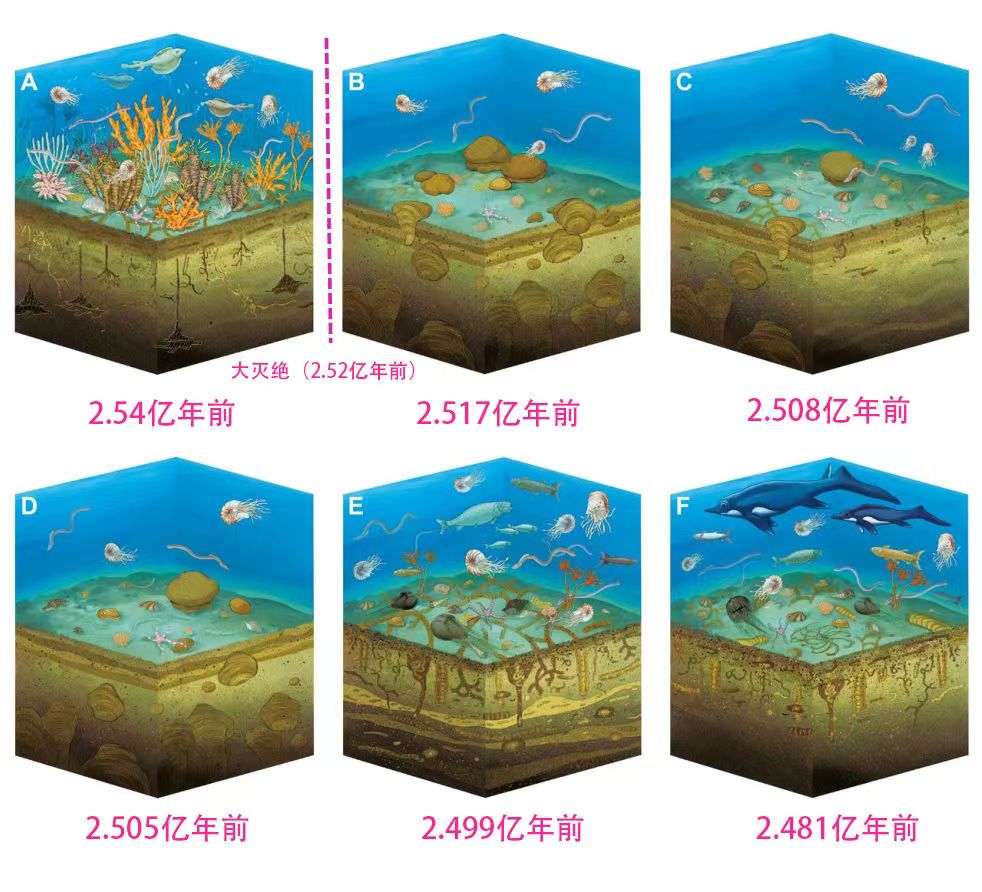Worm-like animals key to the rebuilding of ecosystems after P-Tr mass extinction

The dynamic changes of living creatures in the sea across the Permian-Triassic (P-Tr) boundary [Photo provided to chinadaily.com.cn]
The study group of Chen Zhongqiang, a professor at the State Key Laboratory of Biogeology and Environmental Geology at the China University of Geosciences (CUG), has used trace fossils across the Permian-Triassic (P-Tr) boundary to successfully assess the resilience of the ecological systems, using soft-bodied animals as the representative species in the P-Tr mass extinction event - the largest bio-crisis of Phanerozoic life.
The P-Tr mass extinction led to the depletion of over 90 marine species. The study group of Chen has worked with its partners at home and abroad to conduct the systematic study of over 20,000 trace fossils from different locations across the P-Tr boundary.
Their findings show that soft-bodied animals recovered earlier from the mass extinction than their skeletonized counterparts. Soft-bodied animals mainly consist of worm-like creatures, and play a vital role in producing oxygen in marine sediment and attracting living organisms to settle in the seabed.
Chen said that it took a long time for these worm-like animals to transform the lifeless seabed into a thriving ecosystem, and that the arrival of more arthropod and necton animals was a direct result of the sacrifice of these species.
In addition to improving the living environment of arthropod and necton animals, the worm-like creatures also provided them with a reliable source of food.
The research findings were published under the title of "Resilience of Infaunal Ecosystems during the Early Triassic Greenhouse Earth" in the international journal Science Advances on June 29.






